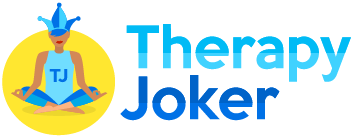
Anorexia Nervosa: Important Facts and Treatment

 The pressure for people to look “perfect” is stronger than ever. And who can blame them for being so? More so with social media being full of posts of people who are flawless and perfect! Sadly, some resort to dangerous measures (such as extreme diets) to achieve this. And in the process, some develop eating disorders. One of them is anorexia nervosa. But what is it? What are its manifestations? Is it treatable? Read on to know more:
The pressure for people to look “perfect” is stronger than ever. And who can blame them for being so? More so with social media being full of posts of people who are flawless and perfect! Sadly, some resort to dangerous measures (such as extreme diets) to achieve this. And in the process, some develop eating disorders. One of them is anorexia nervosa. But what is it? What are its manifestations? Is it treatable? Read on to know more:
What is Anorexia Nervosa?
Anorexia, as it is commonly known, is an eating disorder. However, at this point, there is no data to support the reason for this disorder. But there appears to be a genetic correlation as identical twins are at a higher risk of Anorexia in comparison to fraternal twins.
Anorexia nervosa can affect anyone. Nevertheless, the chances of risk are higher in people whose profession requires maintaining their looks. For instance, athletes, models, entertainers, and dancers have a higher risk of anorexia nervosa.
Significant events in a person’s life including stress can trigger anorexia Nervosa. Unusually low weight is a primary symptom for the diagnosis of anorexia. The severity of the disorder depends on the Body Mass Index (BMI) of the person. Those suffering from mild anorexia typically have a BMI of greater than 17. However, those with moderate anorexia have a BMI of around 16-17. On the other hand, a person who has severe anorexia possesses a BMI of 15 to 16. Lastly, people with extreme anorexia nervosa typically have a BMI of less than 15.
What are the Main Types of Anorexia Nervosa?
 Binging/Purging Type. People who are suffering from this type of anorexia almost always resort to purging. That means they use laxatives after eating. They do this to relieve themselves of their fear of weight gain. They also do this to overcome their guilt of consuming “forbidden” or “restricted” food. Other indicators of this type of anorexia are excessive exercise and people forcing themselves to vomit after a meal.
Binging/Purging Type. People who are suffering from this type of anorexia almost always resort to purging. That means they use laxatives after eating. They do this to relieve themselves of their fear of weight gain. They also do this to overcome their guilt of consuming “forbidden” or “restricted” food. Other indicators of this type of anorexia are excessive exercise and people forcing themselves to vomit after a meal.
Restricting Type. People who suffer from this type of anorexia may perceive themselves to possess a high degree of self-discipline. They tend to be very restrictive with regard to the amount of food that they consume. This includes restricting themselves from consuming fatty or sugary foods too. Also, people with the restricting type of anorexia incline to take in fewer calories than what is necessary to maintain a healthy weight. This can be considered to be a form of starving oneself.
What are the Signs and Symptoms of Anorexia Nervosa?
Anorexia nervosa can manifest in different ways in individuals. However, there are some common symptoms to identify it.
Rapid and significant weight loss. People with anorexia may have a tendency to restrict their diets or vomit to avoid gaining weight. This being said, an unusual loss of weight from an otherwise healthy individual should be taken as an alarming signal.
Obsession with weight, diet, and nutrients. It is normal for people to have concerns about their diet. But that becomes a problem if this concern turns into an obsession. For instance, people might get on to fad diets without proper knowledge.
Insistence on having an excessive exercise routine. A certain amount of exercise is undeniably good for the body. With people suffering from anorexia, however, there is no such thing as “enough exercise.” To the above-mentioned individuals, exercise is something that they MUST do! This is regardless of inclement weather, and being ill or injured.
Unhealthy body image. Someone who has anorexia may have a distorted view regarding how his body looks. The words “fat” or “overweight” is frequently on their lips no matter how thin/underweight they truly are.
Bizarre food habits. Individuals with this eating disorder may develop strange food-related habits. This includes consuming foods in a predetermined order, too much chewing, and unnecessary rearrangement of the foods on a plate.
How To Diagnose and Treat Anorexia?
 Once you suspect an individual from suffering from anorexia, there is an imperative need to finalize this diagnosis. Some ways to diagnose it are a physical test. This test has the aim of measuring a person’s height and weight, vital signs, the examination of body organs, including skin, nails, heart, lungs, and the stomach.
Once you suspect an individual from suffering from anorexia, there is an imperative need to finalize this diagnosis. Some ways to diagnose it are a physical test. This test has the aim of measuring a person’s height and weight, vital signs, the examination of body organs, including skin, nails, heart, lungs, and the stomach.
An internal bodily checkup is also in order. The procedures which comprise this are a complete blood count (CBC), and a urinalysis. Afterward, a doctor who specializes in mental health will likely be asking the patient regarding his emotions, as well as eating habits.
As to the treatment, immediate hospitalization should be the first resort to address the health complication which may arise due to anorexia. One should prioritize restoring their healthy weight. Lastly, psychotherapy (both individual and family-based) should also be a part of the process of curing an anorexia nervosa patient.
More in Mental Health
-
`
5 Reasons Why Dad’s Side of the Family Misses Out
Family bonds are intricate and multifaceted, often creating a unique tapestry of connections. However, many people notice a peculiar trend: stronger...
July 12, 2024 -
`
A Quick Guide on How to Get Short-Term Disability Approved for Anxiety and Depression
Living with anxiety or depression poses unique challenges, particularly in the workplace, where stress can exacerbate symptoms. For many, short-term disability...
July 5, 2024 -
`
Why Do People Feel Sleepy After Eating?
Is feeling sleepy after eating a sign of diabetes? Well, not directly. There are many reasons why you feel drowsy after...
June 20, 2024 -
`
What Is High-Functioning Depression? Symptoms and Treatment
High-functioning depression may not be a term you hear every day, but it’s a very real and challenging experience for many....
June 13, 2024 -
`
Kelly Clarkson’s Weight Loss Ozempic Journey – Debunking the Rumors
In a refreshing moment of transparency, Kelly Clarkson, the beloved singer and talk show host, sheds light on her remarkable weight...
June 3, 2024 -
`
What Is the Best Milk for Gut Health and Why?
In recent years, the milk section at the grocery store has expanded far beyond the traditional options. While cow’s milk has...
May 30, 2024 -
`
Do Dental Implants Hurt? Here’s All You Need to Know
When you hear “dental implants,” you might wince at the thought of pain. But do dental implants hurt as much as...
May 24, 2024 -
`
5 Key Differences Between A Psych Ward & A Mental Hospital
Curious about the differences between a psych ward and a mental hospital? You are not alone. With the mental health conversation...
May 16, 2024 -
`
It’s Official! “Selling Sunset’s” Christine Quinn & Husband Christian Dumontet Are Parting Ways
Have you ever found yourself unexpectedly engrossed in the personal lives of celebrities, especially when their stories take dramatic turns? Well,...
May 9, 2024










You must be logged in to post a comment Login